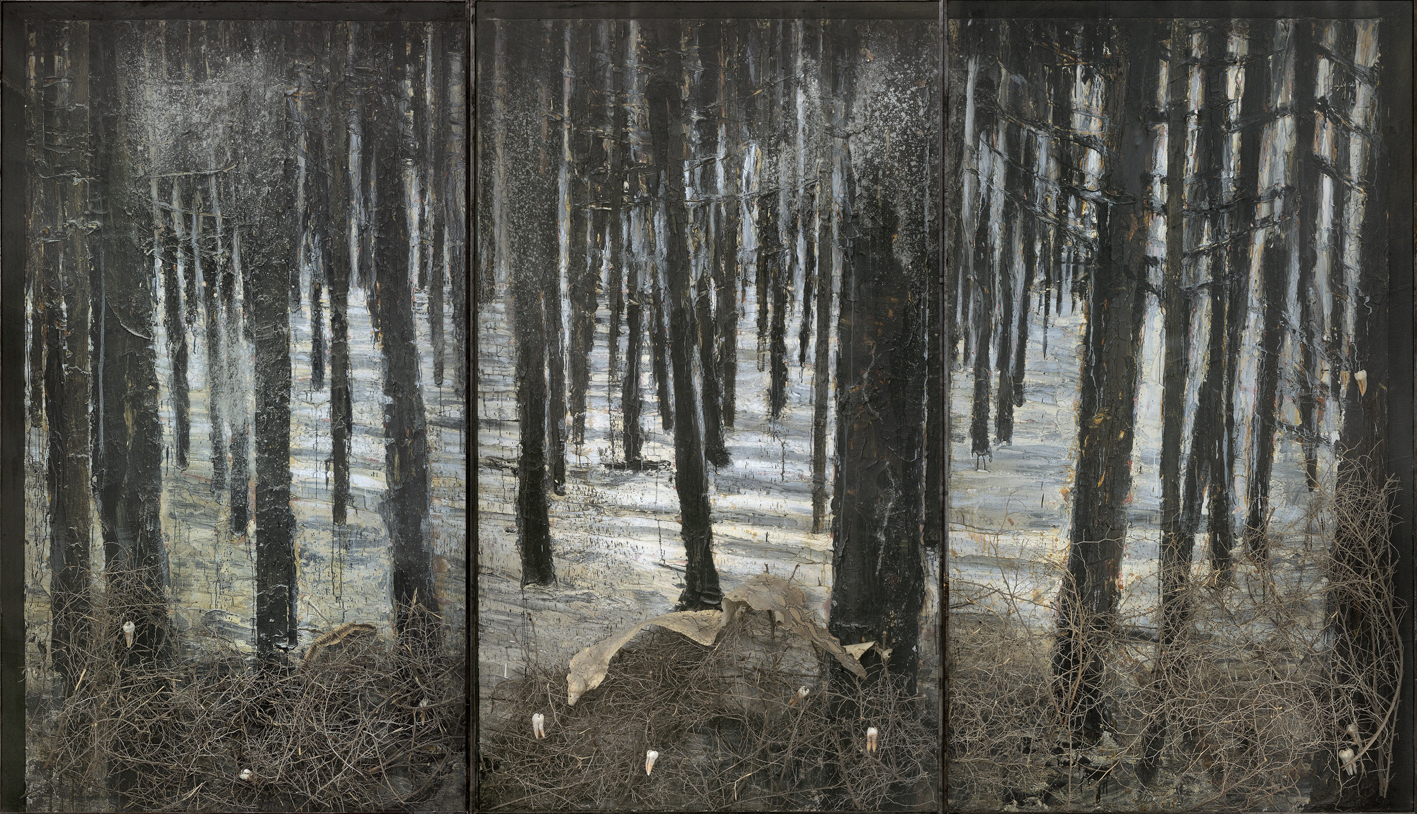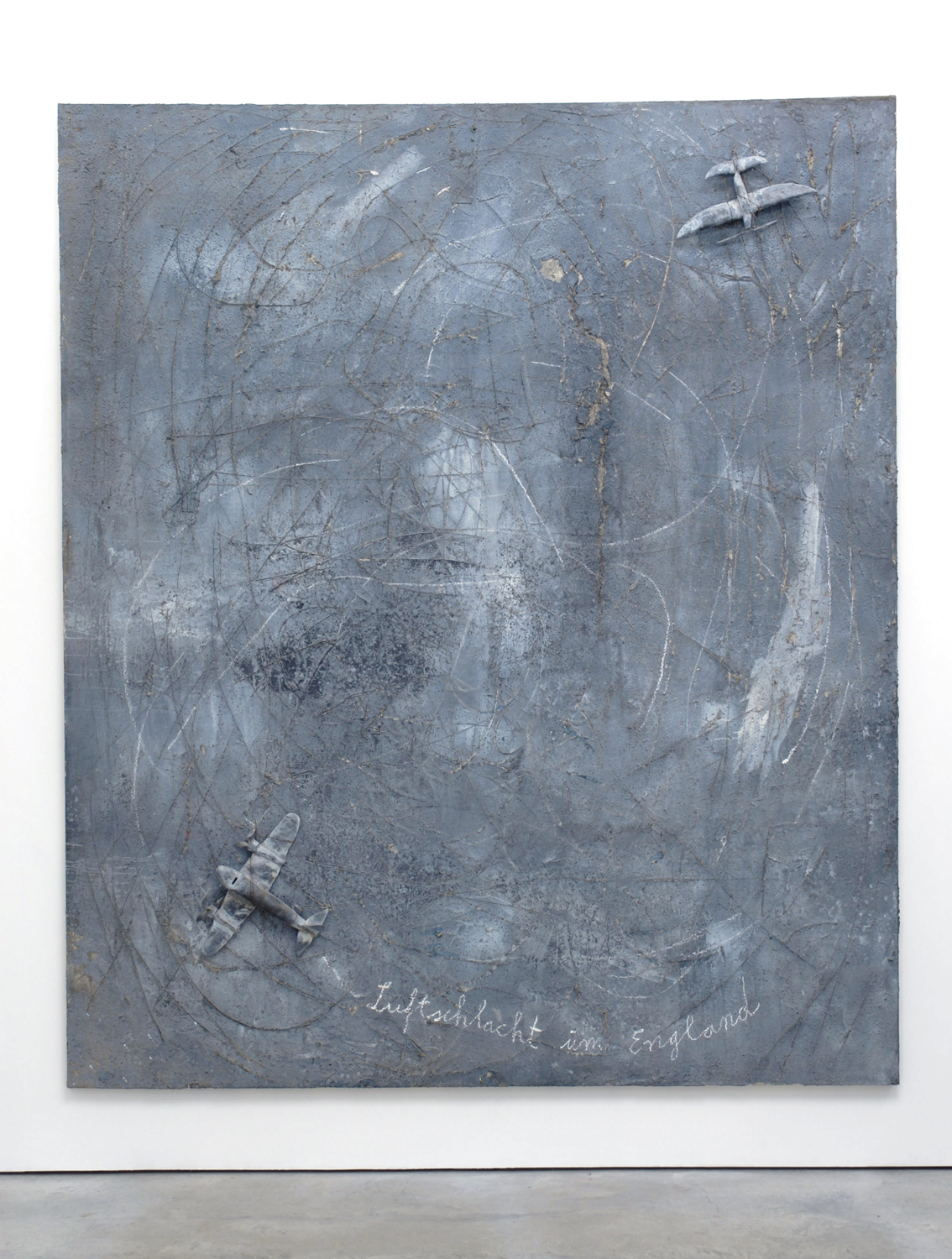Paintings change “because the artist is only half of the process, the other half is the spectator and every spectator creates his own painting,” the renowned German artist Anselm Kiefer told the Spectator before his 2014 Royal Academy retrospective.
The truth of that hit home at the November 28th opening of “Regeneration Series: Anselm Kiefer from the Hall Collection,” running until August 13 at NSU Art Museum, Fort Lauderdale.
I’ve long gone out of my way to see Kiefer’s work, but this show seemed to cut me deeper. A white ball gown in a case, representing “Die Schechina” or the divine spirit, is sliced by large shards of glass. Two bombers, toy-like and menacing at the same time, are stuck onto a parched canvas. And the flowers blooming perkily among the layers of mud, rubble and refuse that form the landscape of many of Kiefer’s paintings, seem to be taunting us with hope.

Born in 1945 in the Black Forest region of Germany, Kiefer’s family hid in the woods during the Allied bombing. In his “Winterwald,” the woods are both protective and ensnaring, with ashes, thorn bush, synthetic teeth and snakeskin embedded in the oil, acrylic, and shellac. As a child, Kiefer played in the rubble of bombed buildings. But rubble is never dead stone to the artist. It’s alive with often rusty colors, which you must step close to the paintings to see, colors that suggest embers and signs of life, regeneration.
While oblique references to the Nazi and post-war eras are the artist’s main subjects, his recent work digs thousands of years into the archaeologic and cosmic record. In “The Fall of Troy” (“Nachricht vom Fall Trojas”), fires burn to announce the news, and the viewer is pulled in as if that war has just ended.
In that part of art that depends on the spectator, Kiefer’s work is even more urgent today, when many have lost a certain smugness (“it can’t happen here”) about Nazi Germany. And the artist’s perennial question, ‘what would you have done?’ under that regime, is cuttingly pertinent. The fine NSU retrospective is a wonderful introduction to this important and sometimes difficult artist. A new Kiefer installation is also on view at The Margulies Collection at the Warehouse in Wynwood through April 29th.



Photo: Charles Duprat


